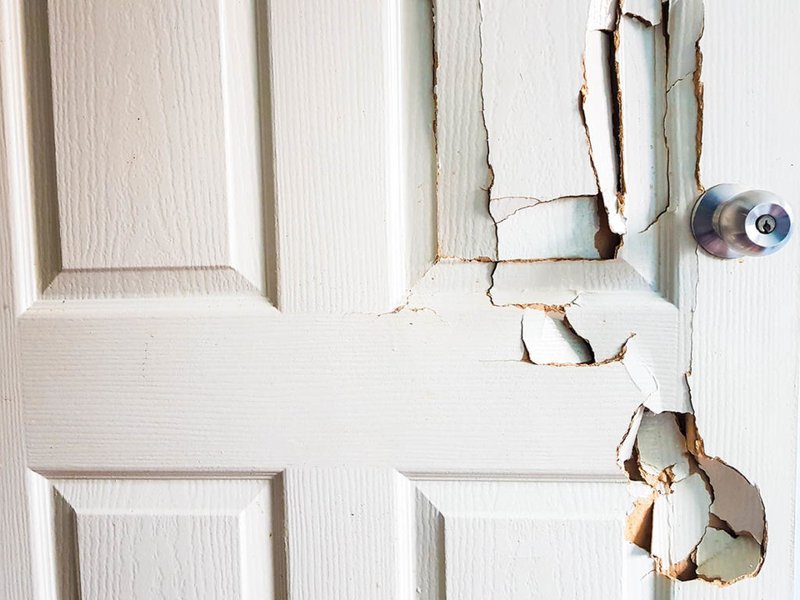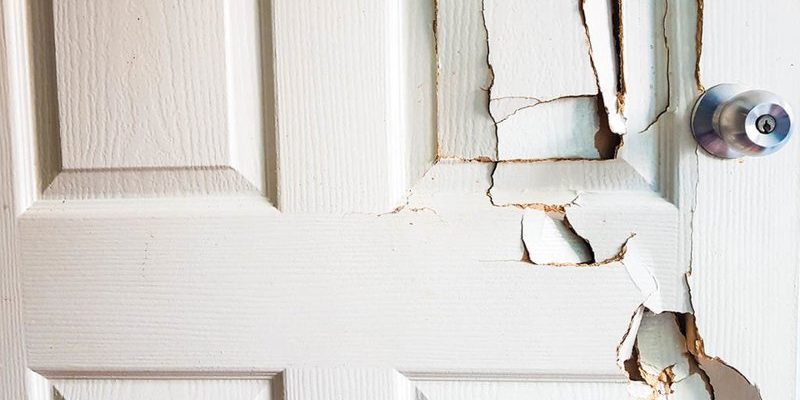
If you’re scratching your head, staring at a lock that used to be reliable, you’re not alone. Door hardware damage from intense heat—especially when sunlight gets amplified through glass—is surprisingly common. And it isn’t just about melted paint or stiff keyholes. We’re talking about real mechanical issues: sticking latches, warped deadbolts, and jammed remotes for smart locks. Whether your home uses a classic Yale deadbolt, a push-button electronic lock, or a fancy remote-enabled keypad, extreme temperatures can throw everything out of sync.
How Extreme Heat from Glass Damages Door Hardware
Here’s the thing—door hardware is tougher than it looks, but it’s still got limits. When you have glass features like sidelights or a full glass panel in your door, sunlight can concentrate in ways you never intended. It’s not just warm; it can get *hot enough to fry an egg* (okay, maybe not literally—but close).
That extra heat can bake the metal, plastic, and even electronic parts inside your door hardware. Metal expands and contracts with temperature swings, which means handles, strike plates, and deadbolt casings can warp or crack over time. If you’ve got a remote-controlled or electronic lock, the circuit boards inside can’t always handle the stress from repeated heating and cooling.
It gets worse when you factor in day-after-day exposure. You might notice the lock feels gritty or tough to turn after a string of hot afternoons. Sometimes you’ll spot visible melting or bubbling around the keypad or latch. That’s a sign your hardware has been cooked one too many times. Even durable brands like Kwikset, Schlage, or Yale aren’t immune—they just buy you a little more time before things go sideways.
Signs Your Door Hardware Has Been Damaged by Heat
You might be wondering, “How do I even know if extreme heat is the problem?” Most homes show the same classic signs:
- Sticky Handles or Deadbolts: The lock used to turn smoothly, now it fights you every step of the way.
- Visible Warping or Discoloration: Parts look faded, bent, or the finish is blistered—especially on the sun-facing side.
- Keypads or Remotes Failing: For smart locks (like August or Yale), the numbers might not respond, or remotes refuse to pair or sync.
- Mismatched Alignment: The latch doesn’t line up with the strike plate, making the door hard to shut or lock.
Honestly, it can feel like your door is suddenly out to get you. In some cases, the extreme heat will even *melt* certain types of plastic housings, leaving them soft to the touch or warped around the screws. If it’s a battery-powered or remote-synced unit, the heat can cause batteries to swell, draining power or making the lock reset on its own. If these issues only pop up during the hottest part of the year or right after a heatwave, sun exposure is probably to blame.
Prepping for Repair: Tools, Safety, and Basic Troubleshooting
So, you’re ready to fix the problem. Before you jump in, let me explain what you’ll need. Most basic door hardware repairs require only a few tools, but dealing with heat damage means you have to look out for brittle or warped parts that might snap if you’re not careful.
- Screwdriver (Phillips and flat-head): For removing locksets, handles, and keypads.
- Needle-nose pliers: Handy when tiny parts are stuck or bent.
- Lubricant: Graphite for locks, silicone spray for handles.
- Replacement parts: This could be as simple as a new latch or as complex as a remote battery pack.
Always disconnect any electronic power source before you work on a smart lock. If batteries are swollen or leaking, handle them with care—a quick trip to your local hardware store for safe disposal is worth the extra step. For classic locks, working in the shade lets you avoid fresh burns and helps you spot cracks or stress marks more easily.
If the lock is just “sticky” but otherwise intact, apply a tiny bit of graphite to the keyhole (never oil—that can gum things up). For electronic locks, try a fresh set of batteries and a simple reset or code re-sync. Sometimes, that’s enough to get things back in working order. If not, you might be dealing with deeper melting or warping.
Step-by-Step: Repairing Heat-Damaged Door Locksets
Here’s how I’d tackle an average repair, from sticky classic locks to full-on smart lock resets:
- Remove the hardware: Use your screwdriver to gently take apart the handle, deadbolt, or keypad. Set all screws aside—you’ll need them for reassembly.
- Inspect for damage: Look for obvious warping, cracks, or melted spots. On combination or remote locks, check the internal circuit board and battery terminals.
- Replace damaged parts: If a small part (like a latch or strike plate) is warped, you can usually buy a direct replacement. For smart units, check if the battery compartment or motherboard has signs of heat stress (like swelling or discoloration).
- Re-lubricate moving parts: Add a puff of graphite to the lock cylinder and a light spray of silicone to hinges and handles. This helps with future sticking.
- Reinstall and test: Put everything back together. Try locking and unlocking several times to make sure things line up and work smoothly. For smart locks, pair or sync the remote as needed, following your brand’s instructions.
Extreme heat can damage even brand-new hardware. If replacement is needed, consider upgrading to models rated for “high sun exposure” or with advanced heat-resistant coatings.
Special Cases: Fixing Keypads, Remotes, and Smart Locks
Smart locks are great—until the sun turns them into tech headaches. If you have a Yale, Schlage, August, or any remote-powered model, you might notice flaky buttons, slow responses, or trouble syncing with your phone or remote. Here’s how I’d approach this situation:
First, remove the cover and check the battery compartment. Swollen or leaking batteries are a sign the heat really did a number on your lock. Replace them with fresh, high-quality batteries (avoid the dollar store packs for smart locks). If the lock still misbehaves, perform a hard reset—usually holding down the reset button for several seconds until the lights blink. Now, re-sync your remote or reconnect the lock to your app following the manufacturer’s pairing instructions.
If the keypad has warped, buttons might get stuck or fail to register presses. Sometimes you can gently pop the keypad off and clean out debris, but if the rubber membrane underneath is melted, you’re probably better off ordering a replacement module. A warped circuit board or keypad isn’t something most people want to attempt repairing at home.
Remember, extreme heat can actually cause the internal code memory to get scrambled. If your lock “forgets” user codes or remote pairings after sun exposure, it’s a clear sign the electronics have been overcooked. In these cases, replacement is really the safest bet—no amount of syncing or battery swaps will fix what’s fried.
Choosing the Right Replacement Parts and Upgrades
If you’ve decided your current lock set just isn’t coming back from the heat damage, don’t worry—you’ve got options. Hardware comes in all shapes, finishes, and tech levels. The key is choosing something that can withstand future sun and heat.
For classic locks, look for hardware with UV-resistant finishes. Schlage, Yale, and Kwikset all offer models made for high-exposure entryways. These finishes don’t just look fancy; they help reflect sunlight and resist fading or bubbling. If you’re going electronic, pick a smart lock rated for outdoor use, with weather-sealed electronics and replaceable keypads.
Consider whether you want a lock with a manual key override (helpful if electronics ever fail), or full remote and code capabilities for keyless entry. If you’re in a really sunny spot, you could even add a shade or awning to cut down on the afternoon heat.
Stronger isn’t always more expensive, but it’s worth investing in hardware that’s rated for your climate, especially on sun-drenched glass doors.
Tips for Preventing Door Hardware Damage from Heat
Repairing hardware is one thing—but wouldn’t it be better to avoid this cycle in the first place? Here are a few smart moves to keep your entryway running smooth:
- Add UV film to glass panels: It cuts the intensity of sun rays and helps prevent the “magnifier” effect on your hardware.
- Install a protective awning: A simple overhang can block that midday sun and keep things naturally cooler.
- Switch to lighter finishes: Silver, nickel, or white handles reflect more heat than dark bronze or black.
- Regular maintenance: Every couple of months, check for sticking, discoloration, or battery issues—especially before peak summer season.
If you use a remote or smart lock, keep the firmware updated and avoid leaving replacement batteries in the sun. It’s a small thing, but it can make a world of difference in how long your hardware lasts (and how often you have to go through repairs or resets).
When to Call a Professional vs. DIY Fixes
Let’s be honest—some repairs are a straightforward Saturday project. Others are best handled by a pro, especially when it comes to advanced electronic locks or high-end handles. If you’re dealing with stubborn remotes that refuse to sync, warped deadbolts that won’t stay aligned, or visible fire/sun damage to the door itself, a locksmith or hardware specialist can save you hours (and probably some frustration).
Call in a pro if:
- You see melted electronics or exposed wiring
- The lock refuses to reset, code, or pair after several attempts
- There’s structural damage to the door or frame from heat warping
- The hardware is still under warranty (attempting DIY fixes might void it)
But for basic sticky locks, faded handles, or common keypad battery hiccups, most folks can handle the job with simple tools and a little patience. And there’s something deeply satisfying about bringing a tired old lock back to life yourself.
Bringing Your Entryway Back to Life
Heat damage might sound dramatic, but it’s just another curveball your home throws at you. With the right tools, a little know-how, and some smart planning, you can repair door hardware damage caused by extreme heat—even the kind that sneaks in through glass panels. Don’t be afraid to upgrade to a tougher, more heat-resistant lock if you need to. And remember, a bit of prevention—a shade here, a UV film there—can save you a heap of trouble down the road.
Your entryway should work smoothly, look sharp, and keep you secure—no matter how bright the sun gets. Stay observant, act early, and your hardware will thank you for years to come.
